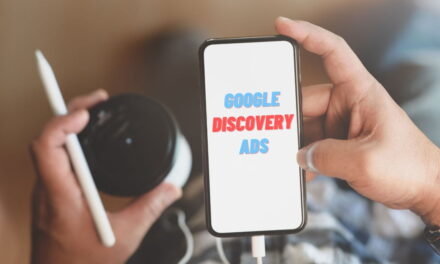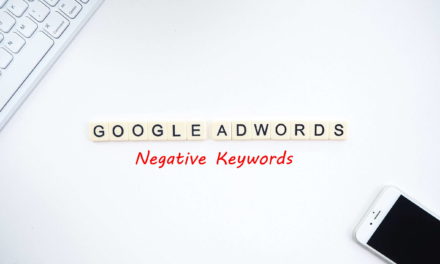Although a simple concept, remarketing has been an evolution in digital marketing space. It has helped businesses take their online advertising campaigns to a whole new level, creating a completely new sales funnel that relies on actual user behaviour and interests.
What is Remarketing?
To put it simply, remarketing is reaching a target user or audience through ads that has interacted with your business in the past. When we say ‘interacted’ it could be something as simple as visiting your website. There are users that visit your website, app or any digital asset on a daily basis, look around and leave.
There could be people who view a particular product at an ecommerce website, even add it to cart and then for some reason decide to leave the site.
Remarketing allows you to reach these users well after they have left your website and are now browsing somewhere else.
The best example of this is if you have ever visited Amazon’s website or app, looked at a product and then left. You will notice Amazon’s ads on other websites you visit as well as on social media with those same products. They are basically trying to get you back and complete the sale. This is the main idea behind remarketing.
Remarketing is an absolutely brilliant concept as it allows a company to continually reach a potential customer that has shown interest in their products or services and slowly get them to convert into a paying customer.
Instead of blindly spending on online advertisements trying to reach various users, you can pinpoint visitors to your website and reach them as they surf the internet.
Most digital marketers know that over 90% of their website traffic will leave without taking any action on their website. This is wasted opportunity and wasted advertising dollar. Remarketing optimises your advertising spend by getting in front of users that have left your website and getting them back for the desired action.
Is retargeting and remarketing the same thing?
While researching on the term remarketing, you may have also come across the term retargeting. The two terms can get confusing for someone new to digital marketing as both pretty much seem like the same thing with the same objective.
Now in the purest sense, retargeting and remarketing have a slight difference. Retargeting is basically reaching customers using online advertisements such as via Google Ads whereas remarketing is reaching customers through emails.
So if you have got an email from an ecommerce company reminding you of the products you checked out or reminding you about your abandoned cart, then that is remarketing.
However, remarketing and retargeting is often used interchangeably by many marketers and as a beginner, you really don’t have to worry about the precise meaning of each term. All you need to know is how to reach a user even after they have left your website so that you can convert them into a paying customer.
Example of Remarketing and Retargeting
To fully comprehend the value of remarketing or retargeting, we need to look at some examples that you can implement in your own business. Although we have already spoken about these examples briefly above, let us get into it in a bit more detail to fully appreciate how remarketing helps in increasing customer engagement.
Also for each of the below examples, we have taken Amazon as a case study. This is simply because Amazon is by far the biggest ecommerce business in the world and it is highly likely most readers would have had some interaction with Amazon already relating better to the given examples.
1) Behavioural Retargeted Ads: Now, if you have browsed through Amazon’s website or app and checked out absolutely any product, you may have noticed those same products show up in online advertisements on your social media feed, blogs or any website you browse after leaving Amazon. This could be on the same day or after a few days.
What Amazon does here is that the moment you enter their website, they install something called as a ‘cookie’ in your browser. Note a cookie is a small piece of code or file that gets added to identify you as a unique user.
Once the cookie is active, it starts tracking what you do on Amazon and which products or pages you have been viewing. So if you have checked out a handbag and then left the site, Amazon will try to get you back by showing you ads of the same product. Here what is being tracked is basically your behaviour in terms of products you seem to be viewing more often than others.
It is not necessary that you will see the same handbag in the ads from Amazon. You may see other handbags or similar products. This is done to ensure you get options and to peak your interest enough to get you back on the Amazon site.
Such behavioural retargeted ads are being used by several online businesses to get their users back to their websites or mobile apps.
More than 90% of all traffic to any website leave without taking any action. This is a huge cost to a company that is fighting and paying good money for the traffic they receive. Using behavioural retargeted ads ensures this traffic comes back to the website, enhances brand recall and allows for a better conversion rate. Remarketing helps in bringing back those customers who usually need some time to decide or need that little nudge to come back and complete the sale.
2) Abandoned Cart Reminders: If you have never added any product to your shopping cart and left without purchasing, you can try this right now on Amazon. Add a few products and then just leave.
Within 48 hours you will get a gentle reminder in your email asking you to complete your purchase. This is one of the most basic forms of remarketing.
These emails don’t just remind you that you have products left in your cart, they may also come with a personalized offer. The offer could be free shipping, a special deal with a discount or some added bonus to complete the sale.
Some companies would track if the user clicked on the reminder link to complete the sale. If not, they will send another follow up email in maybe couple of days’ time to sweeten the deal.
At the end of the day abandoned cart reminders are used to get you back on the website or app and help you to complete your purchase at your convenience. It has helped several businesses increase their conversion rates by simply sending reminder emails and follow up emails with personalized limited time deals.
3) Personalized Product Reminders: Personalized product reminders are also emails you receive that shows you a list of similar products you have viewed or purchased in the past.
The best example of this is Amazon Kindle eBooks. If you have viewed or purchased ebooks in a particular genre, say a Mystery book, then in a few days you will receive an automated email that shows you the latest releases in the mystery genre, the bestsellers and trending ebooks.
The idea is that if you have shown interest in a particular product in the past, it is likely that you may purchase something similar in the future.
Here instead of using retargeted ads on third party websites, Amazon would directly send emails with similar products to entice you in coming back for further purchase.
4) Personalized Onsite Remarketing: While remarketing is usually associated with getting back users who have left a website, there is also something called as personalized onsite remarketing. The best example of this is again Amazon.
What Amazon does is that they have a dynamically generated personalized homepage for each unique user that enters their website. There would be certain things common for all but as you scroll down the main homepage, you will see products based on your past history.
So if you have been viewing shoes and tshirts, you will notice separate sections on the homepage showing you shoes and below that another section showing the latest tshirts.
This is personalized onsite remarketing. Here each user gets to see those products that are most relevant to their own interests and past purchase history.
How to Create Remarketing Ad Campaigns in Google Ads
Remarketing campaigns can be created within various mediums such as Google Ads, Social Media or using email marketing automation.
Right now we shall focus on remarketing ad campaigns in Google Ads. This is because Google is by far the largest medium for remarketing. They also have an extensive display network that provides access to millions of websites on the internet.
Before you get started with remarketing, you should know the following:
1) You need to have at least 100 active visitors in the past 30 days for remarketing to work. For remarketing on Google Search Network or on YouTube, you need 1000 active visitors or users in the past 30 days.
2) While most businesses would be able to use remarketing tools without any limitations, there is a ‘sensitive list’ by Google that restricts usage of user data for remarketing purposes. To know more about the sensitive list, you can check Google’s own support site here.
Steps for Creating Your Remarketing Campaign
1) The ideal first step is to first create an account on Google Analytics and add the Analytics code to all pages on your website. You need to also link your Google Analytics and Google Ads accounts.
Note that technically you could avoid this first step. However, it would make your life much simpler in the subsequent steps if you did add the Google Analytics code.
Also using Google Analytics would provide much more detailed and in-depth insights to your remarketing campaign. Of course it is free to use so you do not have to worry about any additional expenses.
2) Now login to your Google Ads account and create a new campaign.
3) In Campaign Settings –> Network –> Choose “Display Network” only.
Note you can choose the search network as well but that is slightly more complicated and something we will cover in another article. For now, the display network would be ideal for most beginners or small businesses.
4) You need to select Marketing Objectives and check ‘Buy On Your Website’. Within this screen, you can also choose your budget, bid strategy if any and other campaign related information. Click save and continue once done.
5) Now you need to create a new ad group in the next screen. This is a crucial step for remarketing: Once you have created the ad group, for the tab “Choose how to target your ads”, you need to click “interests and remarketing”.
6) Then within category selection, please choose “Remarketing Lists”.
You will be prompted to use the default Google Ads remarketing tag that gets generated. You will have to insert this tag in all pages of your website which you want to track for user activity.
However, if you have followed step 1 above and already added Google Analytics code, select the option to use Google Analytics code and you do not need to do anything further.
7) You will see a new remarketing list being created by Google Ads. Use the default “All visitors” setting for now.
8) Once you have saved the above and entered other Ad Group settings, you can then proceed to Ad Creation.
Here you should be ready with ad graphics in various sizes allowed by Google. Just upload those graphics and you are ready to start with the remarketing campaign. Ideally you should have graphics in as many ad sizes as possible and also have a few text ads ready.
Be sure to take advantage of Google’s responsive ad sizes as well.
9) Click save and continue and your new remarketing campaign should be live.
The important aspect here is the ad content with the message you want. You need to take some time before creating the campaign to ensure your ads; whether text or graphics has the right message for getting visitors back on your website. You can also use the Google Ad Gallery to create your ads.
Get a huge competitive advantage.
Learn about your competitor’s EXACT Google Adwords campaign from which keywords they are using to cost per click, ad texts, landing page URLs, budget spend etc.





